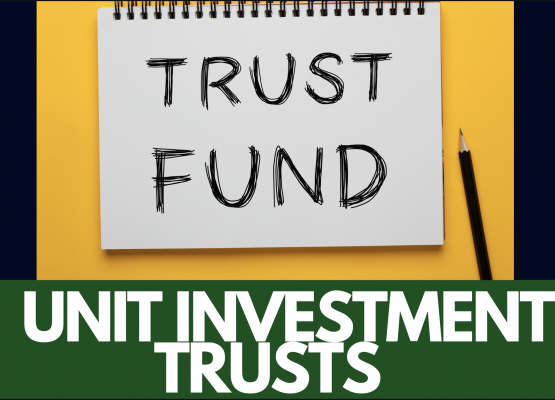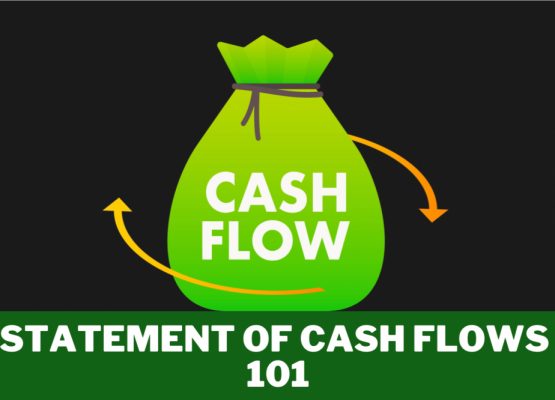When it comes to investing in the stock market as a self-directed investor, it’s important to familiarize yourself with the different types of orders that can be placed to buy and sell stocks and exchange traded funds (ETFs).
Rather you plan to become a long-term investor or trader, its important to consider the difference between a limit order, market order, stop order and the different variations in between, so that you can know which orders will be applicable to each type of strategy you intend to implement for your portfolio.
So, let’s get started discussing the different types of stock market orders out there and for which situations they are applicable.
Limit Order
A limit order is a type of order placed with a brokerage to buy or sell a security (such as a stock or bond) at a specified price or better. The specified price is known as the “limit price,” and the order will only be executed if the market reaches or exceeds the limit price.
For example, if an investor wants to buy shares of a company but only wants to pay a certain price for those shares, they could place a limit order to buy those shares at the specified price or lower. If the market reaches or falls below the specified price, the order will be executed and the shares will be purchased.
Likewise, if an investor wants to sell shares of a company but only wants to sell them at a certain price, they could place a limit order to sell those shares at the specified price or higher. If the market reaches or exceeds the specified price, the order will be executed and the shares will be sold.
Limit orders are useful for investors who want to control the price at which they buy or sell a security and can help prevent them from overpaying or underselling. However, it’s important to note that limit orders may not be executed if the market doesn’t reach the specified price, so investors should consider the potential risks and benefits before placing a limit order.
Market Order
A market order is a type of order placed with a brokerage to buy or sell a security (such as a stock or bond) at the current market price. Unlike a limit order, a market order is executed immediately at the prevailing market price, and the order is filled as soon as possible.
For example, if an investor places a market order to buy shares of a company, the order will be filled at the current market price, which may be higher or lower than the price at which the investor initially saw the stock. Similarly, if an investor places a market order to sell shares of a company, the order will be filled at the current market price, which may be higher or lower than the price the investor initially saw the stock.
Market orders are useful for investors who want to buy or sell a security quickly, without waiting for a specific price. However, it’s important to note that market orders may not be filled at the exact price the investor expects, particularly in fast-moving markets or with stocks that have low trading volume. As a result, market orders may carry more risk than limit orders.
Stop Order
A stop order is a type of order placed with a brokerage to buy or sell a security (such as a stock or bond) once it reaches a certain price, known as the “stop price.” Once the stop price is reached, the stop order is converted into a market order and executed at the prevailing market price.
For example, if an investor wants to buy shares of a company if the stock price reaches a certain level, they could place a stop order to buy the shares once the stop price is reached. If the stock price reaches the stop price, the stop order is triggered and converted into a market order, which is executed at the prevailing market price.
Likewise, if an investor wants to sell shares of a company if the stock price reaches a certain level, they could place a stop order to sell the shares once the stop price is reached. If the stock price reaches the stop price, the stop order is triggered and converted into a market order, which is executed at the prevailing market price.
Stop orders are useful for investors who want to limit their losses or protect their profits. For example, an investor might place a stop order to sell shares of a company if the stock price drops below a certain level, in order to limit their potential losses. Alternatively, an investor might place a stop order to buy shares of a company if the stock price rises above a certain level, in order to protect their profits or limit their potential losses if the stock price continues to rise.
It’s important to note that stop orders do not guarantee a specific execution price, particularly in fast-moving markets or with stocks that have low trading volume. In addition, stop orders may be subject to slippage, which occurs when the market price of a security changes rapidly between the stop price and the execution price of the market order.
Stop Market vs. Stop Limit
A stop limit order is a type of order placed with a brokerage to buy or sell a security (such as a stock or bond) once it reaches a certain price, known as the “stop price.” Once the stop price is reached, the stop order is converted into a limit order, which is executed only if the security can be bought or sold at the specified limit price or better.
For example, if an investor wants to buy shares of a company if the stock price reaches a certain level, they could place a stop limit order to buy the shares once the stop price is reached. If the stock price reaches the stop price, the stop limit order is triggered and converted into a limit order, which is executed only if the shares can be purchased at or below the specified limit price.
A stop market order, on the other hand, is a type of order placed with a brokerage to buy or sell a security once it reaches a certain price, known as the “stop price.” Once the stop price is reached, the stop order is converted into a market order, which is executed at the prevailing market price.
For example, if an investor wants to buy shares of a company if the stock price reaches a certain level, they could place a stop market order to buy the shares once the stop price is reached. If the stock price reaches the stop price, the stop market order is triggered and converted into a market order, which is executed at the prevailing market price.
The key difference between a stop limit order and a stop market order is the type of order that is executed once the stop price is reached. A stop limit order is executed as a limit order, which may offer more control over the execution price but carries the risk of the order not being filled if the limit price is not met. A stop market order, on the other hand, is executed as a market order, which ensures that the order is filled but may result in a less favorable execution price if the market is moving rapidly.
Short Selling Order Types
Short selling is a trading strategy where an investor borrows a stock from a broker and sells it in the market, hoping to buy it back at a lower price and return it to the broker, pocketing the difference in price as profit.
To sell a stock short, there are two types of orders that can be used:
- A short sell market order: This is an order placed with a brokerage to sell a stock short at the current market price. Once the order is filled, the investor immediately borrows the shares from the broker and sells them in the market.
- A short sell limit order: This is an order placed with a brokerage to sell a stock short at a specific price or better. Once the order is filled, the investor immediately borrows the shares from the broker and sells them in the market.
It’s important to note that short selling carries significant risk, as there is no limit to how high a stock’s price can rise, which means that the potential losses from short selling can be unlimited. Short sellers must also pay interest on the borrowed shares, which can increase the cost of the trade. For these reasons, short selling is generally considered to be a more advanced trading strategy, and is not recommended for novice investors.
Summary
In summary, there are various types of orders that can be used when trading stocks, including limit orders, market orders, stop orders, short sell market orders, and short sell limit orders. A limit order is an order to buy or sell a security at a specified price or better, while a market order is an order to buy or sell a security at the prevailing market price. A stop order is an order to buy or sell a security once it reaches a certain price, known as the stop price. A stop limit order is executed as a limit order once the stop price is reached, while a stop market order is executed as a market order. Short selling involves selling a borrowed stock in the market, and can be executed using a short sell market order or a short sell limit order. It’s important for investors to understand the risks associated with each type of order and to use them judiciously based on their individual trading goals and risk tolerance.




